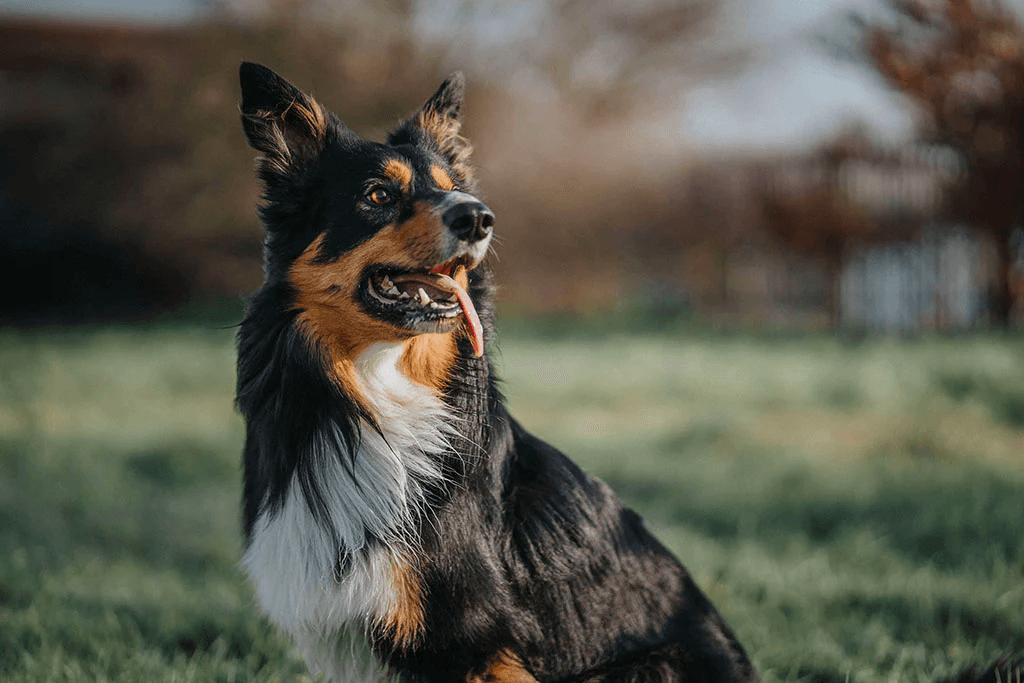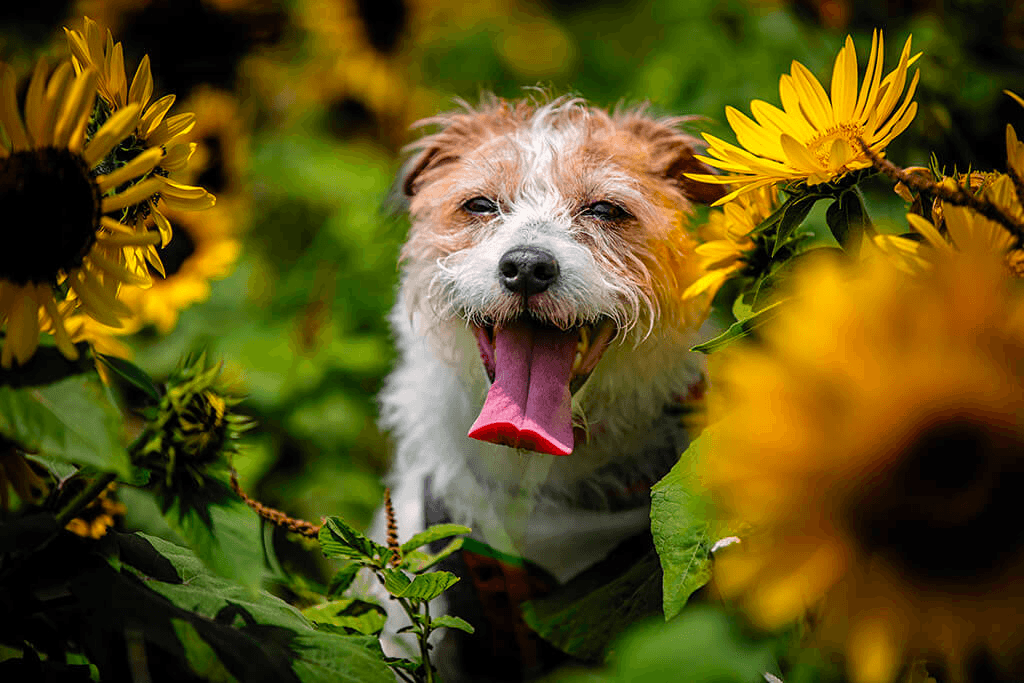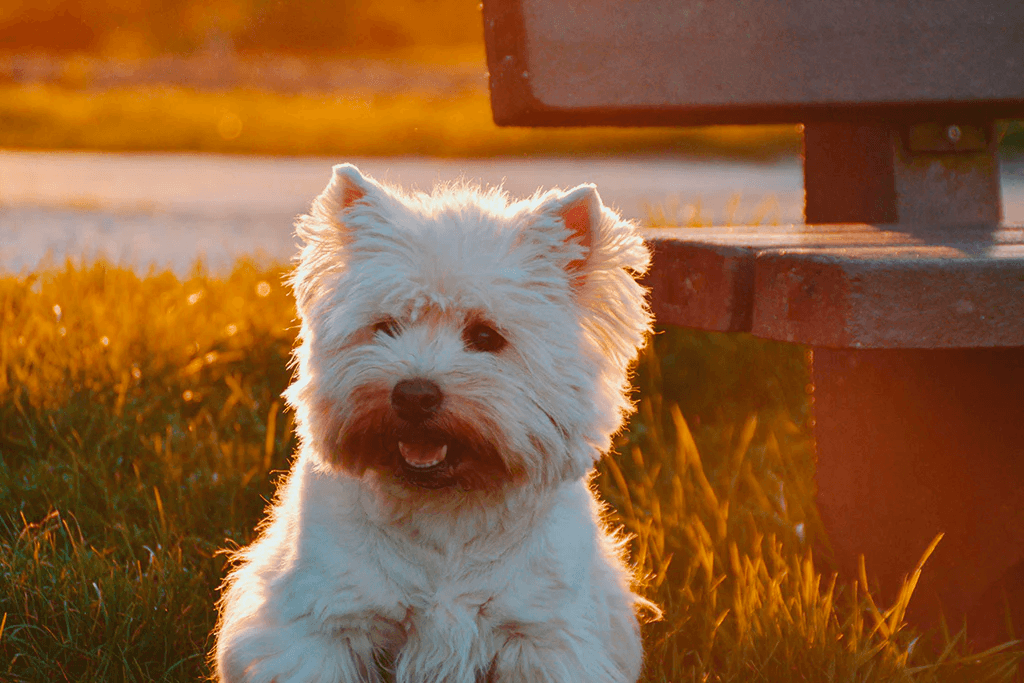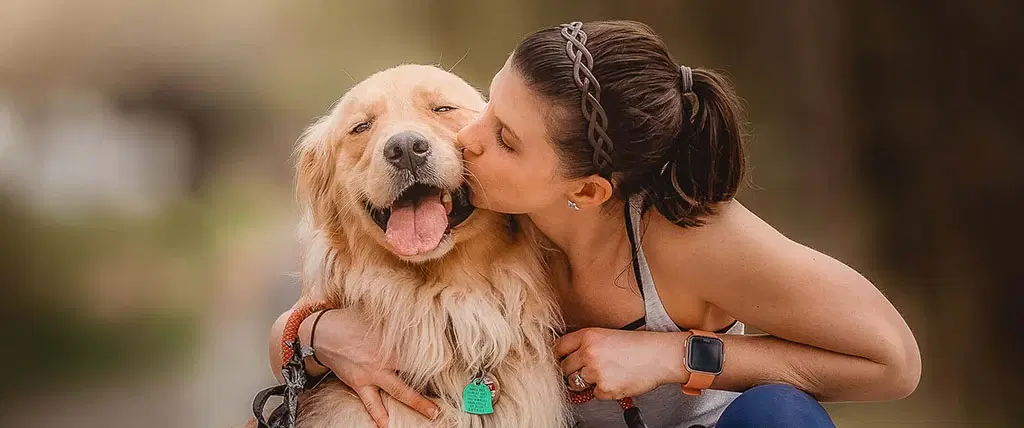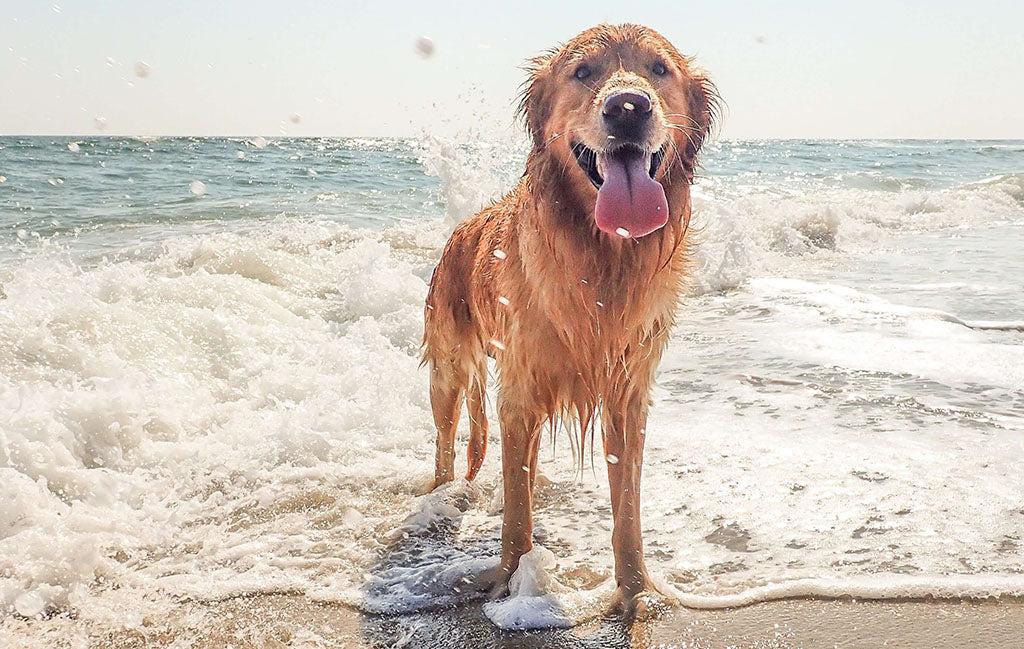If your dog is compulsively eating non-food items like rocks, wood, paper, and dirt, your pup may have pica. Learn the signs, causes, and how to keep your dog safe.
Pica in Dogs: Why Your Dog Eats Strange Objects & What to Do About It

Chewing non-food items is a common dog behavior, and it’s sometimes normal for the dog’s stage of life. It becomes more concerning when a dog actually starts eating non-food items. This behavior, called pica, can have medical and behavioral causes.
Learn the symptoms and causes of pica in dogs, why pica is dangerous, and how it’s managed.
What Is Pica in Dogs?
Pica is a behavioral condition in which a dog regularly eats non-food items. This includes things like rocks, dirt, poop (i.e., coprophagia), paper, plastic, or cloth.
Some dogs with pica routinely choose the same material to swallow while others will eat any non-food item in sight.
The following are common non-food items that a dog with pica might eat:
- Rocks
- Poop
- Socks
- Underwear
- Paper, including wallpaper
- Wood
- Garbage items
- Children’s toys
- Plants
While it can have medical causes, pica is commonly a psychological or behavioral disorder in dogs, especially when it occurs in adult dogs.
Symptoms of Pica in Dogs
Aside from the obvious sign—consumption of non-food items—the following are symptoms that may accompany pica disorder in dogs:
- Diarrhea or loose stool, sometimes with blood
- Non-food items visible in stool
- Dental fractures
- Decreased or lost appetite
- Excessive drooling
- Abdominal pain
- Bloated abdomen
- Dark, tarry stool
- Destructive behavior
- Whining, pacing, or other anxious behaviors
Potential Hazards for Dogs With Pica
Pica in dogs should not be ignored as a behavioral quirk. This behavior can have serious consequences for your dogs’ health. Here are some possible dangers for dogs with pica.
Possible Gastrointestinal Obstructions
Non-food items can get stuck in the stomach or intestines, blocking the movement of ingesta through the gastrointestinal system. In some cases, an obstruction can become life-threatening. Surgery is often needed to remove the offending item.
Gastrointestinal Upset
Eating non-food items can upset the dog’s stomach or intestines, causing vomiting, diarrhea, and abdominal pain.
Toxin Ingestion
Some non-food items, like pennies minted after 1982, human medications, or rat poisons are toxic to dogs.
Choking
Non-food items can be choking hazards. Your dog could accidentally inhale a non-food item.
Broken or Chipped Teeth
Items that are too hard for your dog to chew can break or chip teeth.
Causes of Pica in Dogs
Pica can have behavioral or medical causes. Pica is more common in puppies and young dogs.
Most cases of pica in adult dogs fall into the behavioral category, but it’s helpful to know all potential causes to help assess how to manage or treat the behavior.
Behavioral Causes
Exploratory behavior in puppies: Puppies often explore with their mouths. If they find they enjoy eating something, even if it’s a non-food item, the behavior can continue. In some cases, the behavior can continue into adulthood.
Inadvertent owner reinforcement: If the owner inadvertently reinforces pica, such as acting like it’s cute when a puppy eats grass, the behavior may continue.
Stress, hyperactivity, or anxiety: In some cases, dogs eat items as a response to stress or anxiety. An example is a dog in a kennel who gets stressed and then chews up and eats the bedding provided to them. Hyperactive dogs without enough environmental stimulation may also eat non-food items.
Obsessive and/or compulsive behavior disorders: Dogs can have behavioral disorders that lead to obsessive or compulsive behaviors, like eating non-food items or obsessively licking themselves.
Medical Causes
Nutritional deficiencies: Dogs who have a nutritional deficiency due to an unbalanced diet, starvation, or diseases that affect the uptake of nutrients may eat non-food items in an attempt to get those nutrients.
Gastrointestinal disease: Gastrointestinal diseases like inflammatory bowel disease or parasitic infections can result in pica, as the dog eats non-food items to meet nutritional needs or soothe gastrointestinal pain.
Metabolic diseases: Some metabolic diseases like diabetes mellitus or hyperthyroidism (uncommon in dogs) can cause pica. These conditions can make a dog feel very hungry.
Appetite stimulants: Dogs taking appetite stimulants like mirtazapine or capromorelin, may consume non-food items if they’re not fed appropriately
Cognitive dysfunction: Senior dogs with canine cognitive dysfunction, or dog dementia, may begin to eat non-food items.
Other Possible Causes
Genetic factors may also play a role in dogs developing pica. For example, blanket sucking and pica are more common in Doberman Pinschers [1].
Diagnosing Dogs With Pica
Veterinarians diagnose pica in dogs either through direct observation of the behavior or based on history provided from the pet parent.
There are no tests that diagnose pica. Once pica is diagnosed, additional testing is needed to rule out medical causes of the behavior. Your veterinarian is likely to start with blood and urine testing to make sure your pet is healthy overall. Fecal testing may also be recommended, especially in puppies who may have parasitic infections.
If your dog has ingested a non-food item and is having clinical signs of an obstruction in their gastrointestinal tract, the veterinarian may recommend X-rays or ultrasound. Some clinics may offer endoscopy, which allows them to look in your dog’s stomach and possibly remove foreign objects. In some cases, surgery is needed to remove a foreign object.
Depending on what your dog ate, other testing may be necessary. For example, if your dog has eaten something like rat poison, blood coagulation testing may be necessary.
How to Treat Pica in Dogs
If there is an underlying medical cause for the pica, treatment may stop the behavior. For example, if your puppy has intestinal worms, treating the worms may improve the pica.
If your dog is experiencing nutritional deficiencies, putting your dog on a balanced diet that meets the standards of the Association of American Feed Control Officials (AAFCO) for your pet’s life stage may improve your dog’s signs.
If your dog’s pica is due to an obsessive-compulsive type of disorder, medication may help. These medications usually include selective serotonin reuptake inhibitors (SSRIs) or tricyclic antidepressants (TCAs). Examples of drugs that may be prescribed include:
- Fluoxetine
- Sertraline
- Paroxetine
- Clomipramine
- Amitriptyline
For older dogs experiencing canine cognitive dysfunction (dog dementia), selegiline may be prescribed.
Tips for Managing Pica in Dogs
If pica has an underlying behavioral cause, the condition is often one that is managed rather than treated. The pet parent will need to take steps to keep their pet safe in the home.
The following are steps you can take to keep your pet with pica safe.
- Do not leave your pet out when they’re unsupervised.
- Pet-proof your home. Remove items from the floor that can be easily swallowed. Keep clothes put away. Use latching trashcans.
- Crate train your dog. A crate is a great way to keep your pet safe while you’re not able to supervise them. Be cognizant of what items you put in their crate. Some items, like toys, towels, or blankets, may be tempting to a dog with pica.
- Train your dog with a basket muzzle. If your dog has pica, a basket muzzle may keep them from eating non-food items while on walks.
- Provide alternatives for oral stimulation. Make sure your dog has plenty of safe, sturdy chew toys. Use treat puzzles and puzzle feeders.
- Improve your dog’s exercise and enrichment routine. Dogs who have behavioral pica may benefit from new forms of enrichment and increased exercise.
- Keep your dog on a high-quality diet that meets AAFCO standards to ensure they don’t experience a nutritional deficiency.
- See your veterinarian. If your dog’s behavior does not improve, consult with a veterinarian. If the behavior is severe, your veterinarian may refer you to a behaviorist.
References:

 R
R